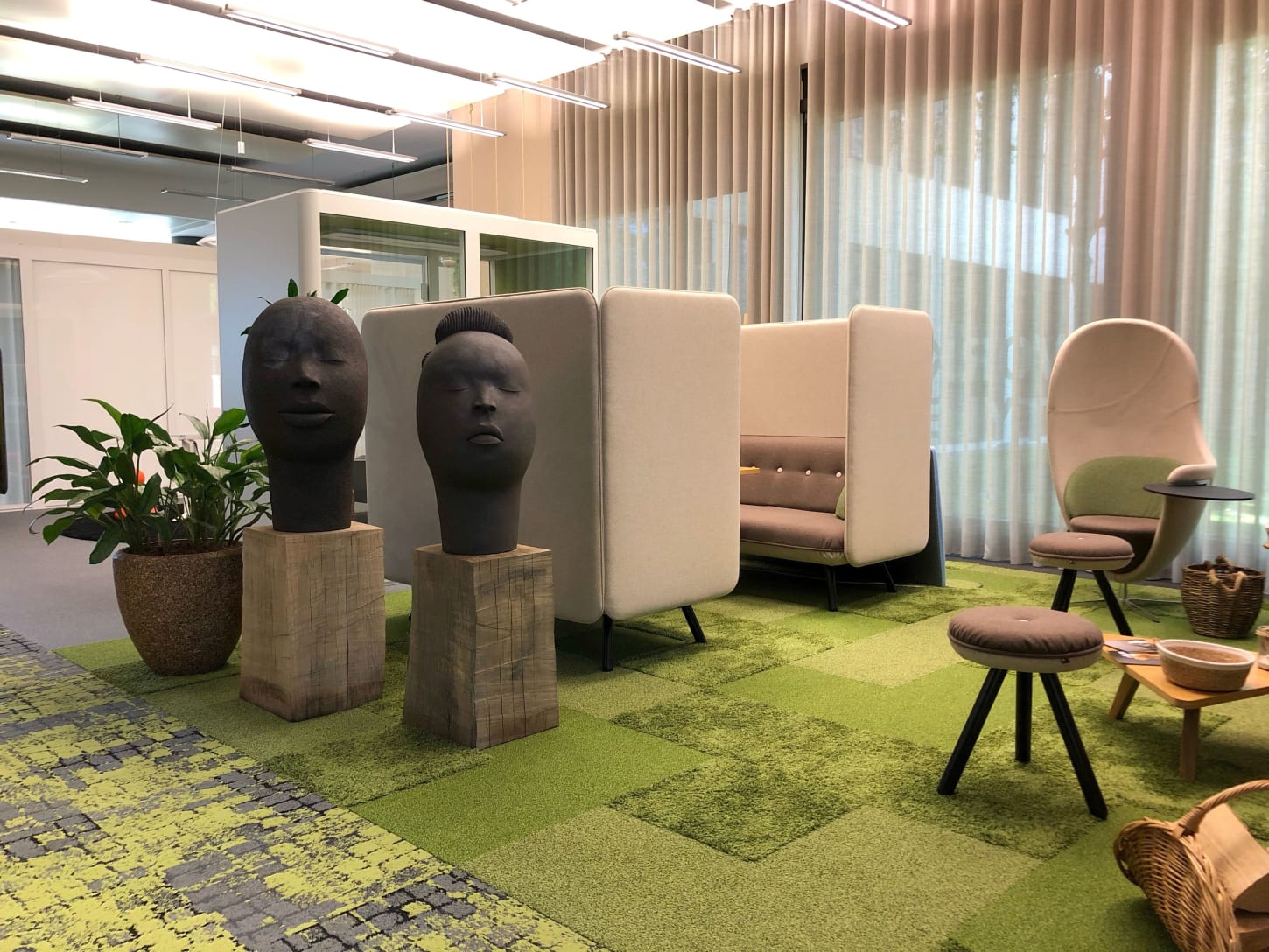
Art in the company

König + Neurath presents sculptures by Frauke Meszaros in the showroom
When was the last time you visited an exhibition? And what did you take away from it? Art inspires and touches the senses. "Works of art are more than just aesthetically pleasing objects, more than just masterpieces of human skill and ingenuity: they deepen our understanding of ourselves and others..." it is said. That is why people like to surround themselves with art.
For companies, exhibiting art has two aspects. On the one hand, they can use it to change the mood and atmosphere in the rooms and give their employees creative impulses, and on the other hand, art is an expression of the individual corporate culture.
"Works of art are more than just aesthetically pleasing objects, more than just masterpieces of human skill and ingenuity: they deepen our understanding of ourselves and others..."
This can now be experienced live in our Munich showroom. Art has always played an important role at König + Neurath, thanks in large part to Gerti König. The wife of the long-standing owner of the company has always supported regional artists. For example, the Wassertum in Karben, and soon the new high-bay warehouse, are currently being designed by an artist - and in the König + Neurath showrooms, works of very different colours by contemporary artists can be seen time and again.
Today we introduce you to Frauke Meszaros, whose works are currently on display in our Munich showroom at Erika-Mann-Strasse 55. We talked to the artist, who has been working with ceramics since she was 13 years old, about her works.
Who do you represent with your sculptures?
My sculptures are snapshots of states of mind. The faces I create are sometimes happy ... and sometimes they show a U-Hackerl, as they say here in Bavaria. I depict the aspects of my current mental states. This creative process, in which I take care of myself, is about self-cleansing. It almost has something therapeutic about it.
What is your relationship to the materials you use?
I have been working with ceramic materials for almost 30 years. That means, like a painter who always uses the same paint manufacturers, I know the material inside out. All the sculptures I create are made of high-fired ceramic mass and, as stoneware, are absolutely weatherproof. The material also brings with it a certain limitation, the sculptures always need a grounding, and craftsmanship is necessary for the processing of the material.
How do you work?
I used to work more figuratively, now I mainly design heads. They are created in a process that starts with a sketch. As an industrial designer and artist, I am concerned with proportions, contrasts, an aesthetic of lines, light and shadow. During this period of their creation, the sculptures really grow on me. They are like little children that I have to let go of at some point. When they have dried for six to eight weeks, they are fired. And here it can happen that they even burst in the kiln. Once, six of my 140-centimetre sculptures burst during firing. In this respect, there is a farewell before the firing. But once the heads are fired, they withstand wind, heat, cold and rain.
What role does space or the environment play for the sculptures?
My sculptures are made for the outdoors. If they are in a garden, they live with the elements: In winter they wear a bonnet of snow, in autumn they cry. By looking at them from inside, I create a relationship between the inside and the outside. If you see one of the heads in a lavender bed or under a tree, a special calm comes over you. They have a meditative effect, but also a special feel. They want to be touched, they ground and they give strength.
Indoors, my sculptures also interact with the things that surround them. They create fixed points and invite reflection. In a way, they establish a relationship between one's own inner life - they reflect feelings and thoughts - and the inanimate objects they are placed between.
What inspires you?
Everything inspires me. It can be the interplay in the materiality of different surfaces, the transition from a macro- to a micro-structure, an ornament on a traditional tablecloth, a special stone or a piece of wood. Inspiration often arises from irritation. The perception of an object, the reflection on it and then the conscious use of it in a certain context. Sometimes it is a trial-and-error process, something emerges from a mutation. If you like: out of chance.
Sources used: World History of Art. Honour, Hugh, Fleming, John (eds.), Prestel 1992.
